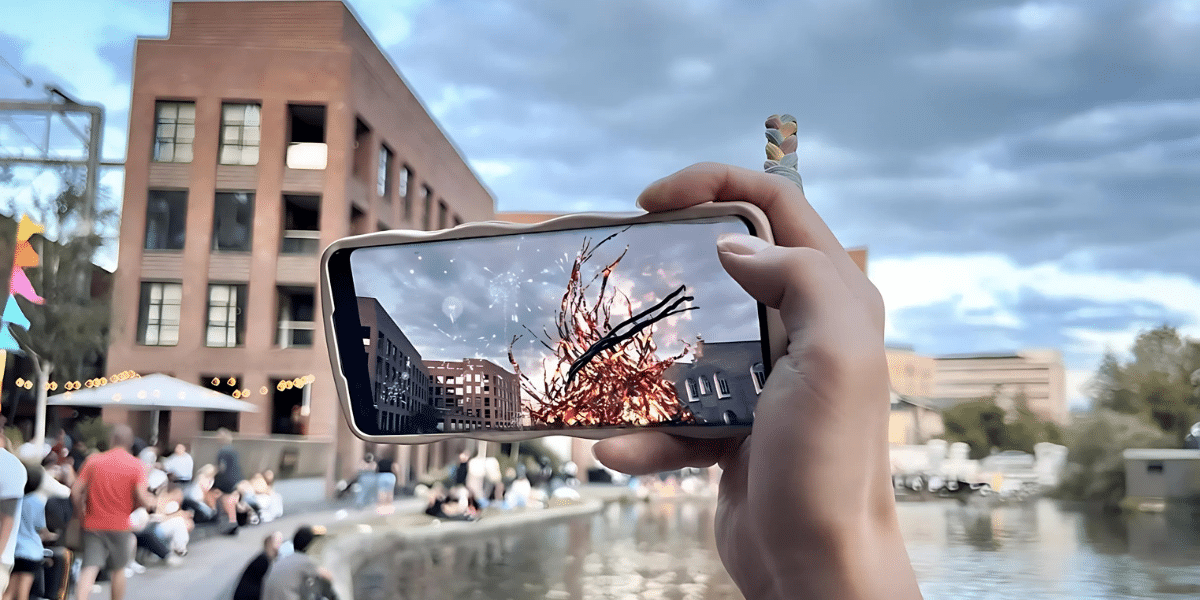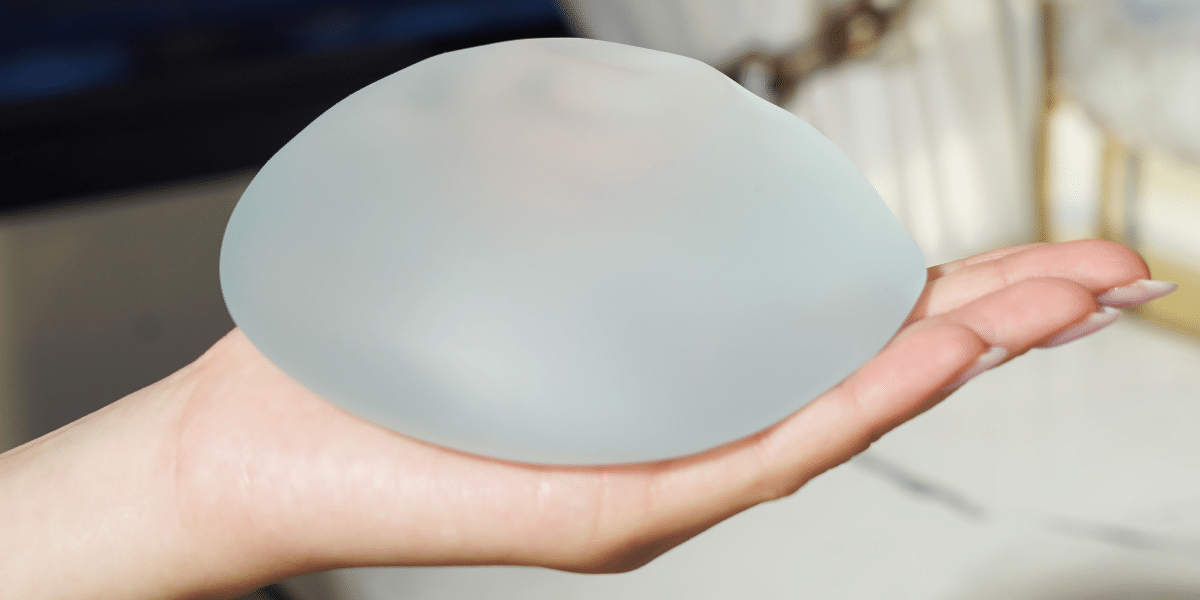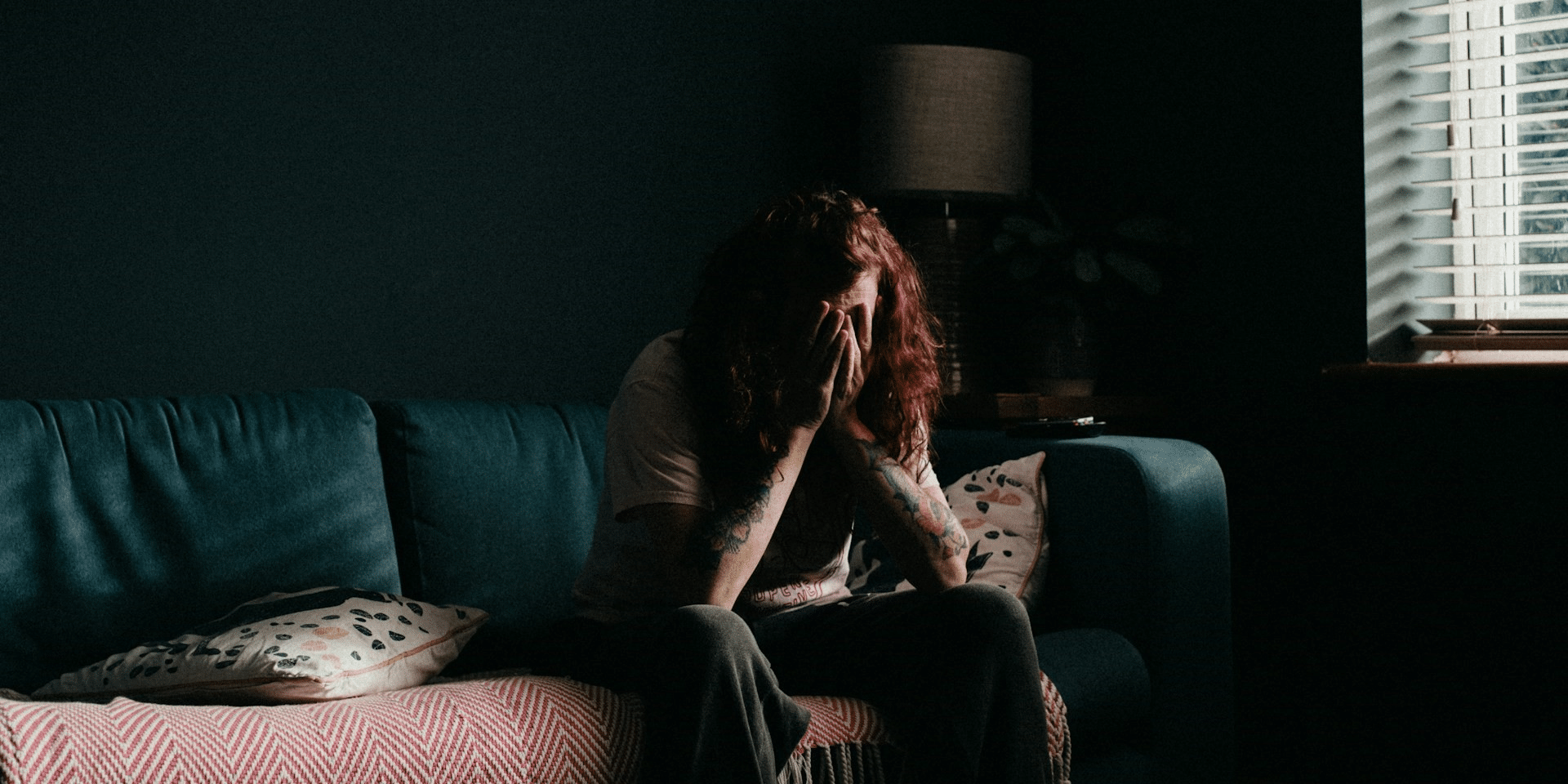The fusion of technology and tradition is reshaping how cultural heritage is shared, and nowhere is this more evident than at the 2024 London Yunnan Cultural Festival. At the heart of this celebration is a groundbreaking augmented reality (AR) installation, The Phenomenon of Firecracks. Designed by interactive artist Ash Xu, XR artist Raine Li, and digital artist Jiayi Lin, this immersive digital experience offers festival-goers a unique opportunity to engage with Yunnan’s centuries-old Torch Festival in a modern, sustainable way.
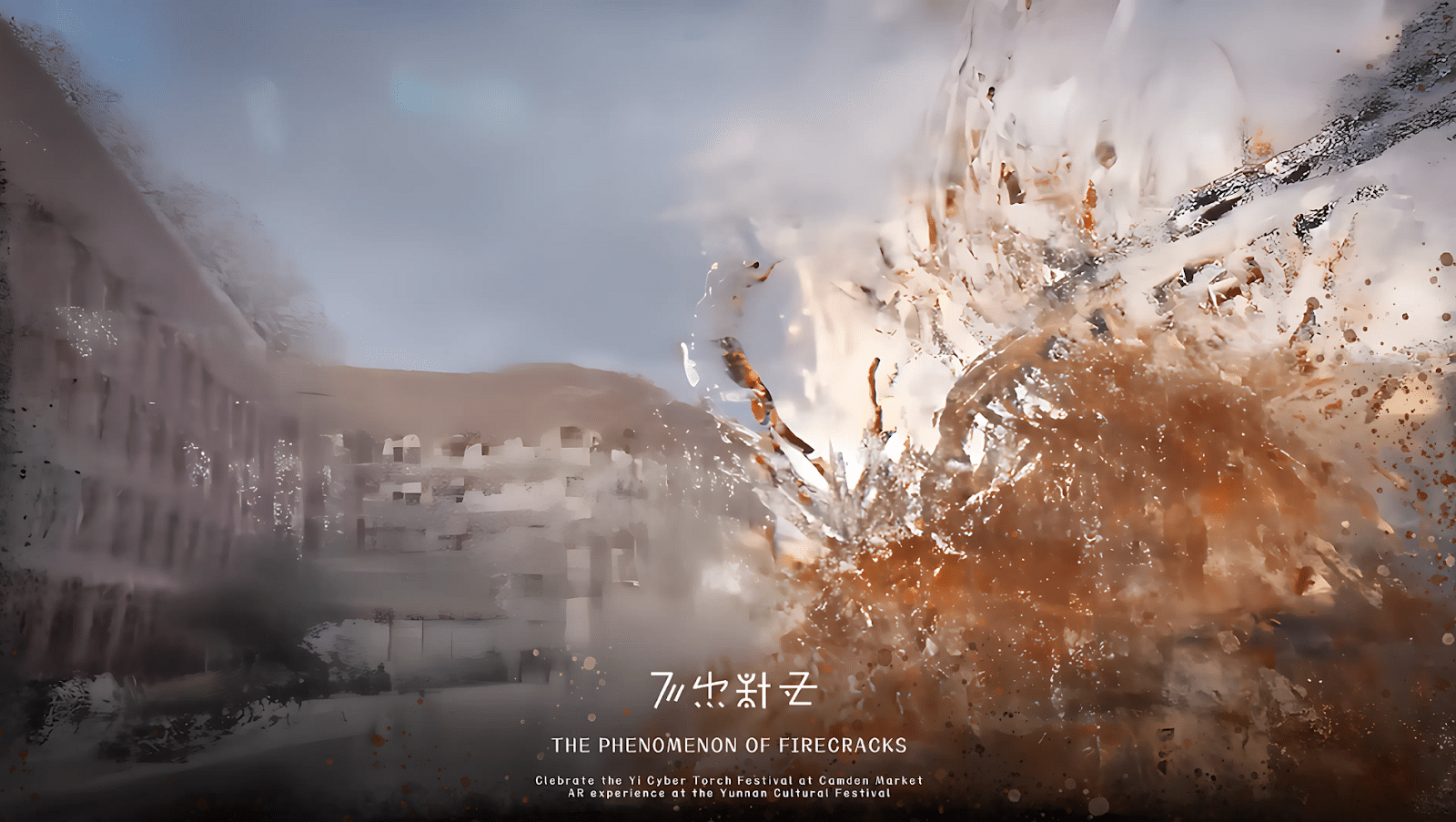
Photo Courtesy: Ash Xu / Image: AR display at the London Camden Yunnan Cultural Festival
A New Way to Experience Tradition
The Phenomenon of Firecracks reimagines the ancient Torch Festival, a significant event for the ethnic minorities in Yunnan, China. Traditionally, the Torch Festival is a vibrant celebration involving firecrackers, communal bonfires, and torches. It serves not only as a ritual for good harvests but also as a community-building event that strengthens bonds through shared cultural experiences.
Thanks to the innovative work of Xu, Li, and Lin, this time-honored celebration has been transformed into an augmented reality installation. Visitors to the London Yunnan Cultural Festival can now interact with virtual torches, exploring a new form of cultural connection. Through AR technology, participants are transported to Yunnan, surrounded by digital flames and the visual splendor of the festival, all while standing in the heart of London.
“We wanted to create a bridge between Yunnan’s rich heritage and London’s contemporary art scene,” says Ash Xu. “The digital format allows us to share this beautiful tradition sustainably while fostering cultural exchange in ways previously unimaginable.” The goal was to break down geographical barriers and introduce Londoners and tourists to a festival that, until now, might have remained relatively unknown outside of China.
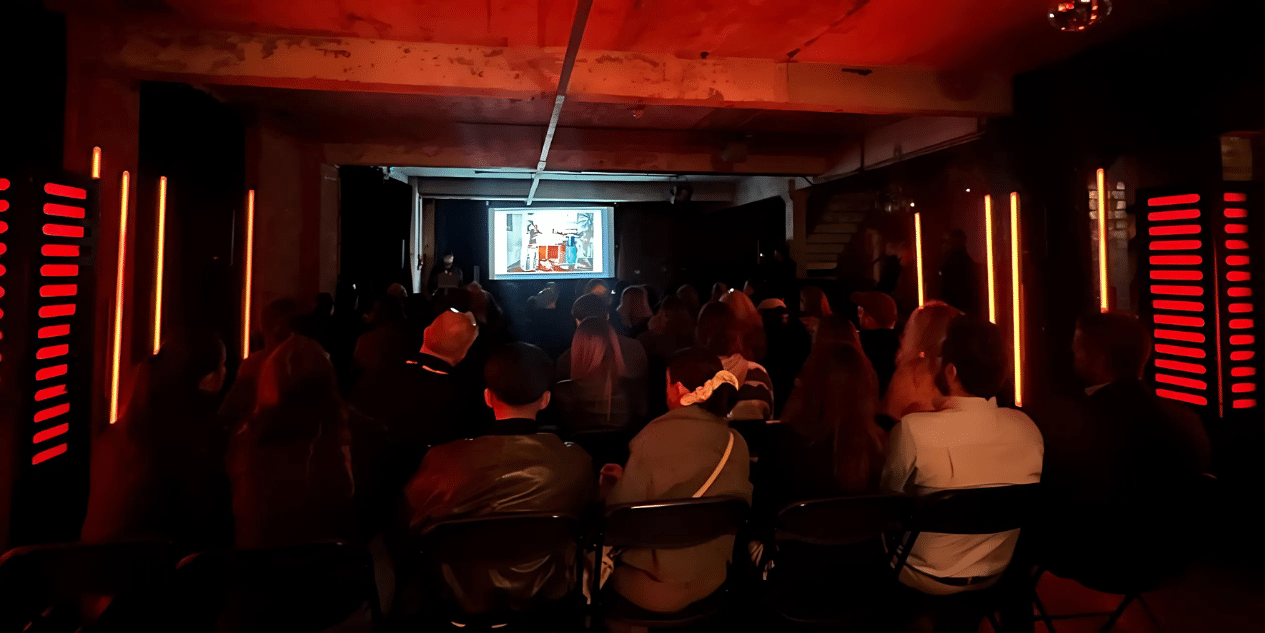
Photo Courtesy: Ash Xu / Image- Disruptia Seminar in progress
Cultural Inclusion Through Technology
The AR installation not only highlights the use of cutting-edge technology but also underlines London’s dedication to promoting cultural inclusivity. By leveraging augmented reality, The Phenomenon of Firecracks opens up a space for cross-cultural dialogue. For visitors, the experience offers more than just a visual spectacle—it is an invitation to engage with the cultural traditions of Yunnan in a way that is both interactive and sustainable.
The project aligns with a global push toward sustainability. By virtualizing the torches, a symbol central to the festival, the installation eliminates the need for physical resources like wood and firecrackers, traditionally used in the celebration. The result is a deeply engaging cultural experience that respects both the environment and tradition.
This innovative approach brings to life the vibrant energy of the Torch Festival while maintaining the festival’s authenticity. It reflects a growing trend of using digital solutions to preserve cultural heritage, ensuring that traditions are shared across the globe without compromising their integrity or the planet’s resources.
A Highlight at Disruptia 2024
Beyond the Yunnan Cultural Festival, The Phenomenon of Firecracks made its mark at Disruptia, a seminar focused on lighting innovation and its applications in various industries. The event, which featured experts such as Tom McLoughlin, managing director of Territory Studio, and Christophe Bauder, founder of WHITEvoid, discussed the transformative power of technologies like augmented reality in lighting and architectural design.
During the seminar, Xu, Li, and Lin showcased how the AR installation could revolutionize how festivals, exhibitions, and architectural spaces are experienced. By incorporating AR, events can become more immersive, drawing participants into the heart of the action, whether it’s a cultural celebration or an architectural marvel. Their presentation illustrated how AR can serve as a powerful tool to enhance both physical and virtual environments, allowing audiences to interact with spaces in dynamic, meaningful ways.
Looking Toward the Future of Cultural Exchange
As AR technology continues to advance, the possibilities for cultural preservation and exchange are expanding. The Phenomenon of Firecracks is just one example of how technology can serve as a bridge between tradition and modernity. Through this digital lens, Yunnan’s Torch Festival has not only been preserved but also introduced to new audiences in an engaging, forward-thinking manner.
For the team behind the installation, this project marks the beginning of a broader movement to blend digital innovation with cultural heritage. By transforming age-old traditions into immersive experiences, they are helping to ensure that cultural practices, like the Torch Festival, continue to inspire and unite people from different walks of life, transcending borders and generations.
As festivals like the Yunnan Cultural Festival grow in popularity, they offer a powerful platform to share traditions with the world. Whether through augmented reality or other digital innovations, these projects show that preserving heritage doesn’t mean leaving it in the past—it means reimagining it for the future.
Conclusion
The Phenomenon of Firecracks stands as a testament to the evolving relationship between technology and cultural heritage. By bringing together tradition and AR, the creators have redefined how people can interact with and appreciate the rich history of Yunnan’s Torch Festival. Through their work, Xu, Li, and Lin have not only introduced a new level of interactivity to the festival experience but also underscored the importance of sustainability and cultural inclusion in modern event design.
As this installation continues to gain attention, it paves the way for future projects that will blend cultural traditions with cutting-edge technologies, creating new avenues for connection and understanding in our increasingly globalized world.
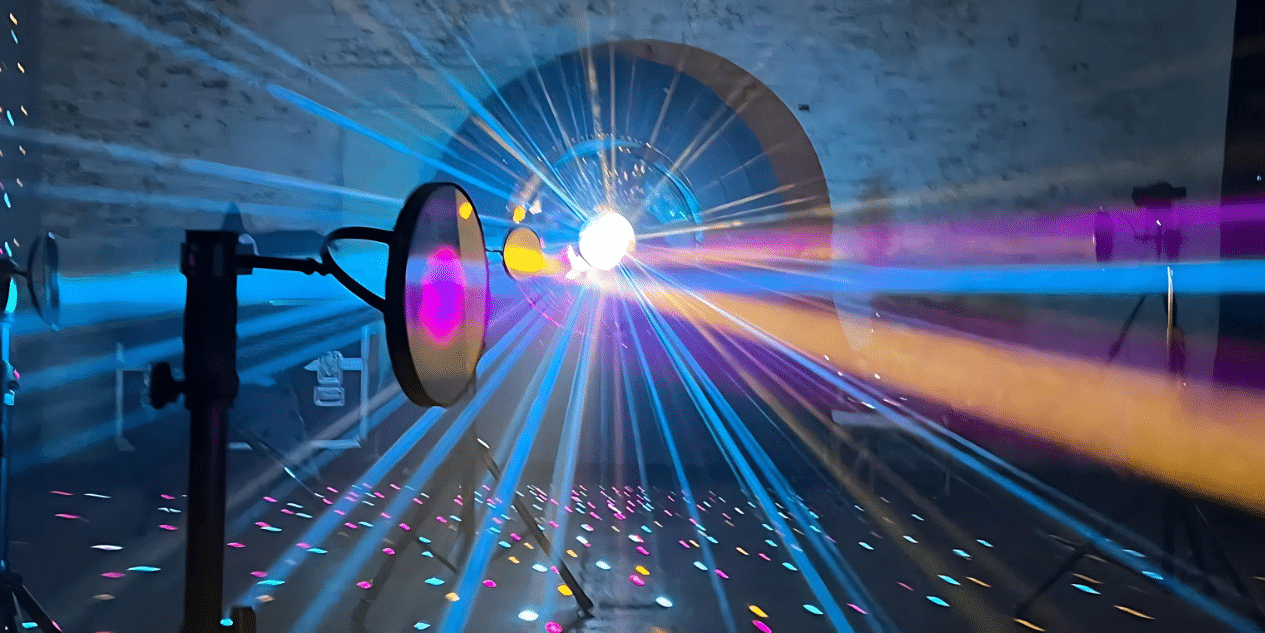
Photo Courtesy: Ash Xu / Image- Disruptia exhibition site
“The Phenomenon of Firecracks” was also displayed at Disruptia. Disruptia, a specialist lighting seminar, hosted Tom McLoughlin, managing director of Territory Studio, Christophe Bauder, founder of WHITEvoid, and many others. Together, the creators discussed the latest technologies and how they are affecting the lighting and architectural industry.
Published by: Nelly Chavez

